Do you have a question about the Panasonic TH-L50EM5S and is the answer not in the manual?
General guidelines for safe servicing, including lead dress, protective devices, and leakage current checks.
Methods to prevent damage to sensitive electronic components from electrostatic discharge.
Information and precautions regarding the use of lead-free solder in service procedures.
Overview of main boards (A, P, K, GK) and their repairability.
Procedure for accessing the service mode using remote and main unit controls.
Overview of the SRV-TOOL utility and its functions.
Procedure to check IIC bus lines and access troubleshooting information.
Chart explaining power LED blinking patterns to diagnose issues.
Troubleshooting steps for scenarios where the unit does not power on.
Instructions for assembling the control button and side AV bracket.
Procedure for installing the speaker unit and its related parts.
Precautions and methods for safe handling and installation of the LCD panel.
Steps for applying shading sheets and installing the LCD panel into the cabinet.
Instructions for applying barriers and felt, then installing the LCD panel.
Steps for assembling the LED panel, bracket, and associated wiring.
Guidelines for correctly tightening screws during assembly procedures.
Procedure for installing printed circuit boards and mounting brackets.
Steps for mounting the bottom metal bracket and the bottom cover.
Instructions for applying felt and sponge to the back cover.
Procedure for installing and securing the back cover with screws.
Specifications and safety guidelines for handling the LCD module and the TV.
Table of voltage specifications for testing points on the A-board.
Table of voltage specifications for testing points on the P-board.
Overview of the main functional blocks and their interconnections within the TV.
Guidelines and illustrations for proper wire routing and management.
Key to symbols, units, and measurement conditions used in schematic diagrams.
Schematic diagram for the first part of the A-board, detailing MTK and STM connections.
Schematic diagram for the second part of the A-board, showing Audio-AMP and tuner circuits.
Schematic diagram for the third part of the A-board, covering LVDS panel interface.
Schematic diagram for the fourth part of the A-board, detailing AV and PC input connections.
Schematic diagram for the fifth part of the A-board, showing HDMI, ARC, and SD card interfaces.
Schematic diagram for the sixth part of the A-board, focusing on power connector and Analog ASIC.
Schematic diagram for the seventh part of the A-board, detailing SPI memory and EEPROM circuits.
Schematic diagram for the eighth part of the A-board, covering voltage regulators and ICs.
Schematic diagram for the ninth part of the A-board, showing bypass condenser circuits.
Schematic diagram for the tenth part of the A-board, illustrating termination and DDR circuits.
Schematic diagram for the eleventh part of the A-board, detailing DVB-T FE and DMD circuits.
Schematic diagram for the twelfth part of the A-board, covering MT5367 and HDMI interfaces.
Schematic diagram for the GK-Board, outlining its components and connections.
Schematic diagram for the K-Board, showing RM-RECEIVER and AI-SENSOR circuits.
Schematic diagram for the P-Board, detailing PFC and LLC power supply sections.
Top component side layout of the A-BOARD with component references.
Top and bottom component side layouts of the GK-BOARD with references.
Top and bottom component side layouts of the K-BOARD with references.
Top component side layout of the P-BOARD with component references.
Guide to accessing exploded views and mechanical parts lists.
Notes and abbreviations for the electrical replacement parts list.
Detailed list of electrical replacement parts, including capacitors and their specifications.
General guidelines for safe servicing, including lead dress, protective devices, and leakage current checks.
Methods to prevent damage to sensitive electronic components from electrostatic discharge.
Information and precautions regarding the use of lead-free solder in service procedures.
Overview of main boards (A, P, K, GK) and their repairability.
Procedure for accessing the service mode using remote and main unit controls.
Overview of the SRV-TOOL utility and its functions.
Procedure to check IIC bus lines and access troubleshooting information.
Chart explaining power LED blinking patterns to diagnose issues.
Troubleshooting steps for scenarios where the unit does not power on.
Instructions for assembling the control button and side AV bracket.
Procedure for installing the speaker unit and its related parts.
Precautions and methods for safe handling and installation of the LCD panel.
Steps for applying shading sheets and installing the LCD panel into the cabinet.
Instructions for applying barriers and felt, then installing the LCD panel.
Steps for assembling the LED panel, bracket, and associated wiring.
Guidelines for correctly tightening screws during assembly procedures.
Procedure for installing printed circuit boards and mounting brackets.
Steps for mounting the bottom metal bracket and the bottom cover.
Instructions for applying felt and sponge to the back cover.
Procedure for installing and securing the back cover with screws.
Specifications and safety guidelines for handling the LCD module and the TV.
Table of voltage specifications for testing points on the A-board.
Table of voltage specifications for testing points on the P-board.
Overview of the main functional blocks and their interconnections within the TV.
Guidelines and illustrations for proper wire routing and management.
Key to symbols, units, and measurement conditions used in schematic diagrams.
Schematic diagram for the first part of the A-board, detailing MTK and STM connections.
Schematic diagram for the second part of the A-board, showing Audio-AMP and tuner circuits.
Schematic diagram for the third part of the A-board, covering LVDS panel interface.
Schematic diagram for the fourth part of the A-board, detailing AV and PC input connections.
Schematic diagram for the fifth part of the A-board, showing HDMI, ARC, and SD card interfaces.
Schematic diagram for the sixth part of the A-board, focusing on power connector and Analog ASIC.
Schematic diagram for the seventh part of the A-board, detailing SPI memory and EEPROM circuits.
Schematic diagram for the eighth part of the A-board, covering voltage regulators and ICs.
Schematic diagram for the ninth part of the A-board, showing bypass condenser circuits.
Schematic diagram for the tenth part of the A-board, illustrating termination and DDR circuits.
Schematic diagram for the eleventh part of the A-board, detailing DVB-T FE and DMD circuits.
Schematic diagram for the twelfth part of the A-board, covering MT5367 and HDMI interfaces.
Schematic diagram for the GK-Board, outlining its components and connections.
Schematic diagram for the K-Board, showing RM-RECEIVER and AI-SENSOR circuits.
Schematic diagram for the P-Board, detailing PFC and LLC power supply sections.
Top component side layout of the A-BOARD with component references.
Top and bottom component side layouts of the GK-BOARD with references.
Top and bottom component side layouts of the K-BOARD with references.
Top component side layout of the P-BOARD with component references.
Guide to accessing exploded views and mechanical parts lists.
Notes and abbreviations for the electrical replacement parts list.
Detailed list of electrical replacement parts, including capacitors and their specifications.






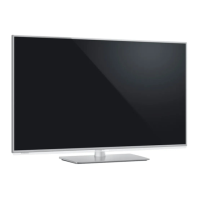

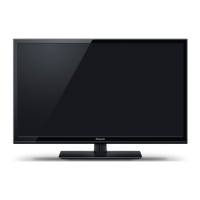
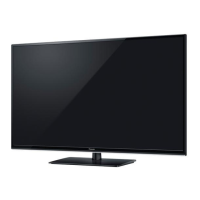
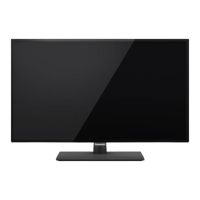
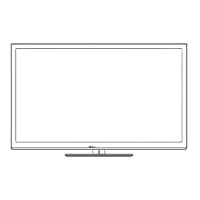
